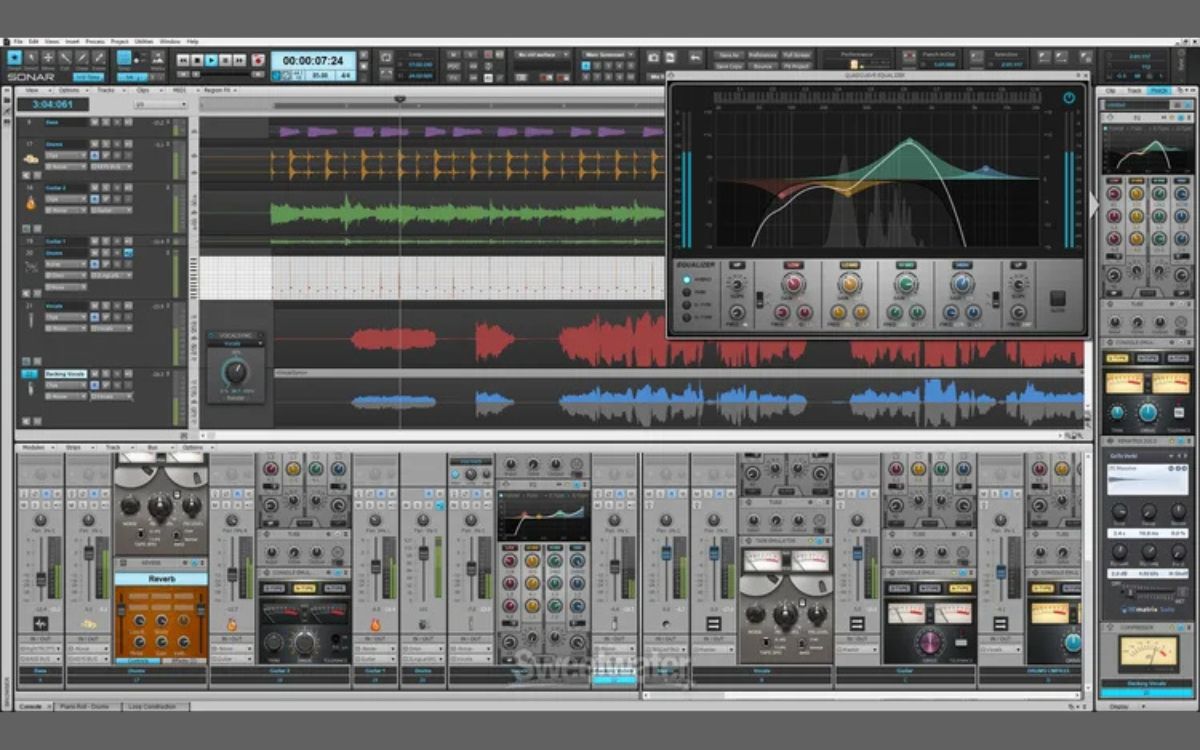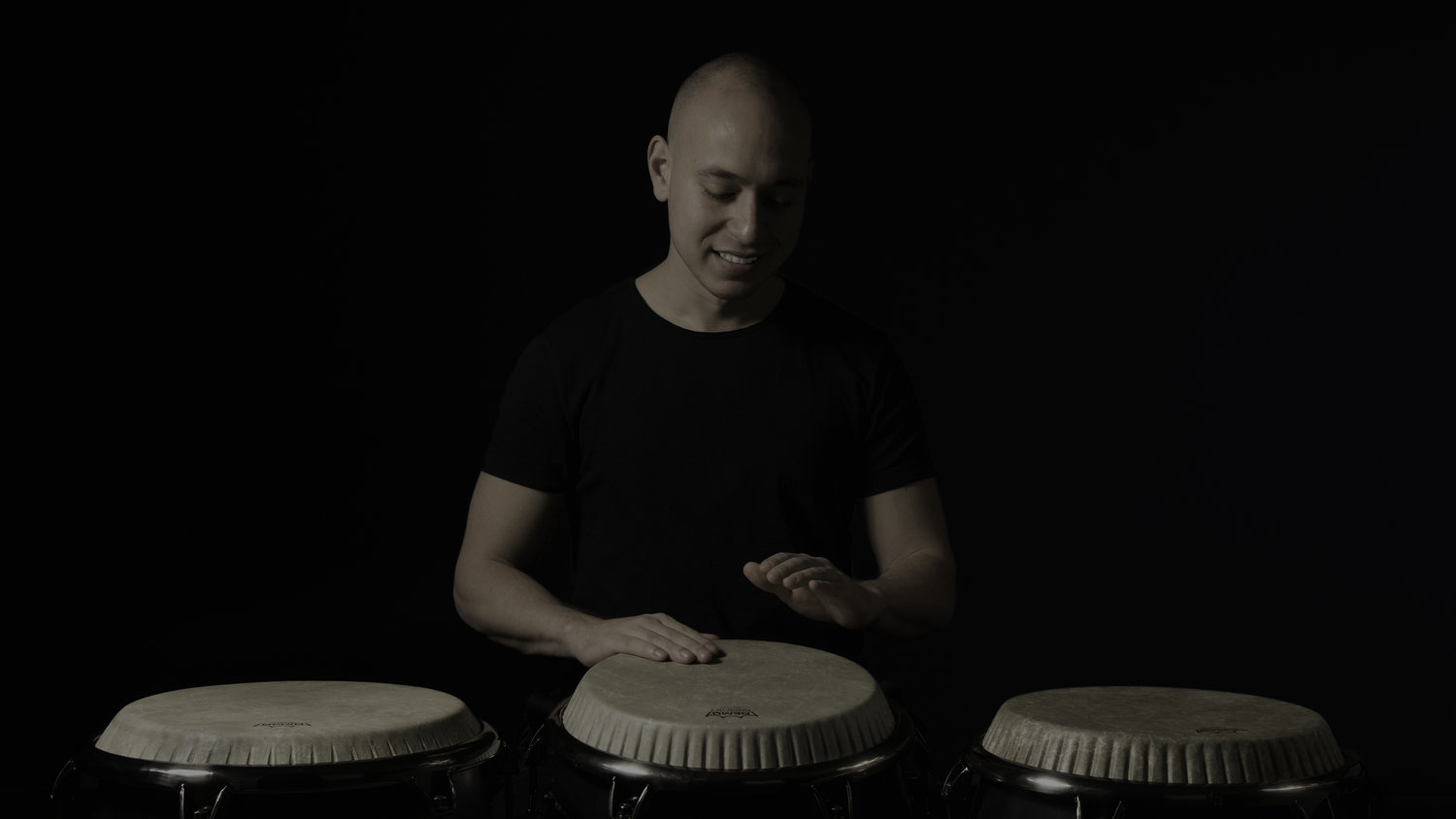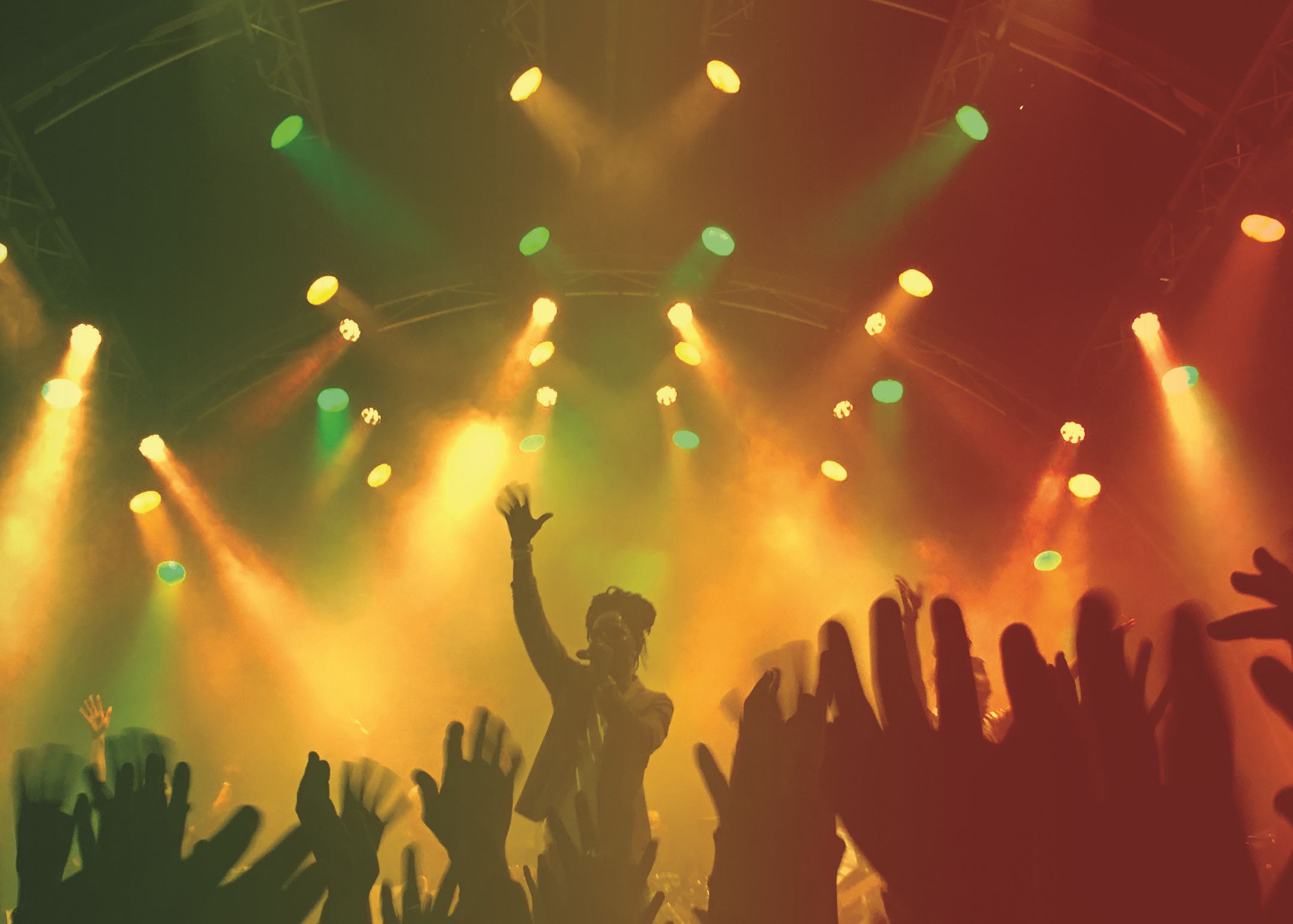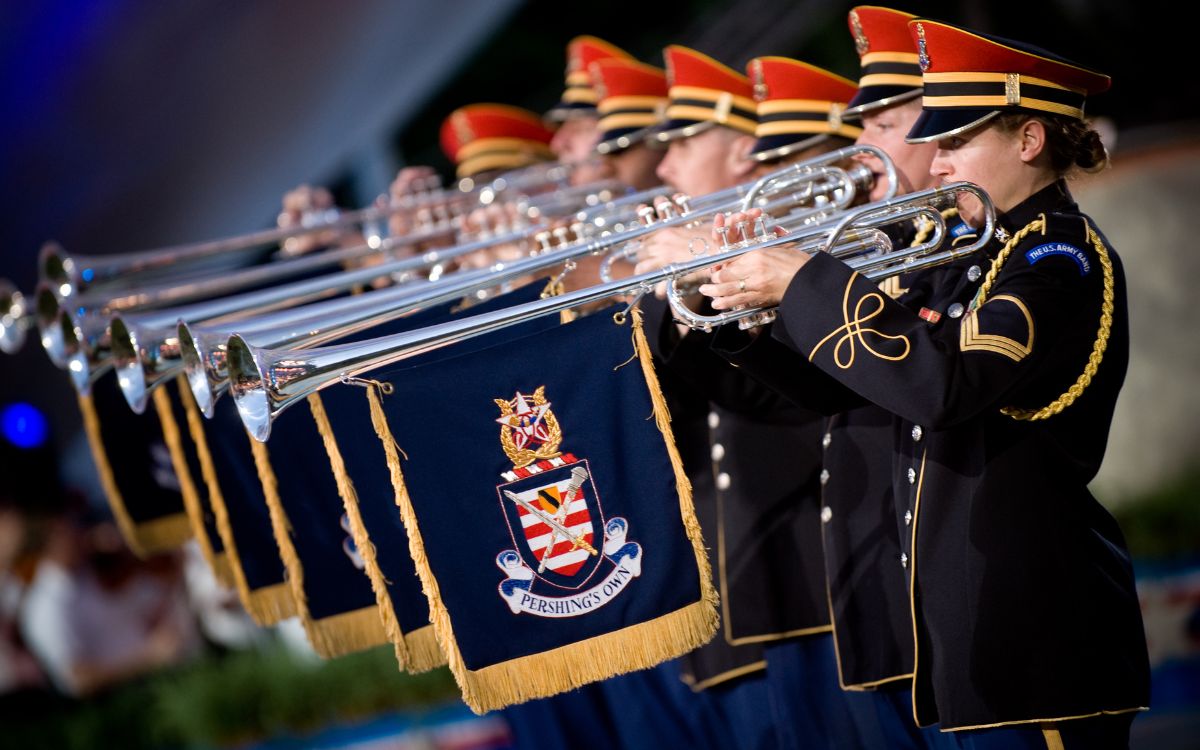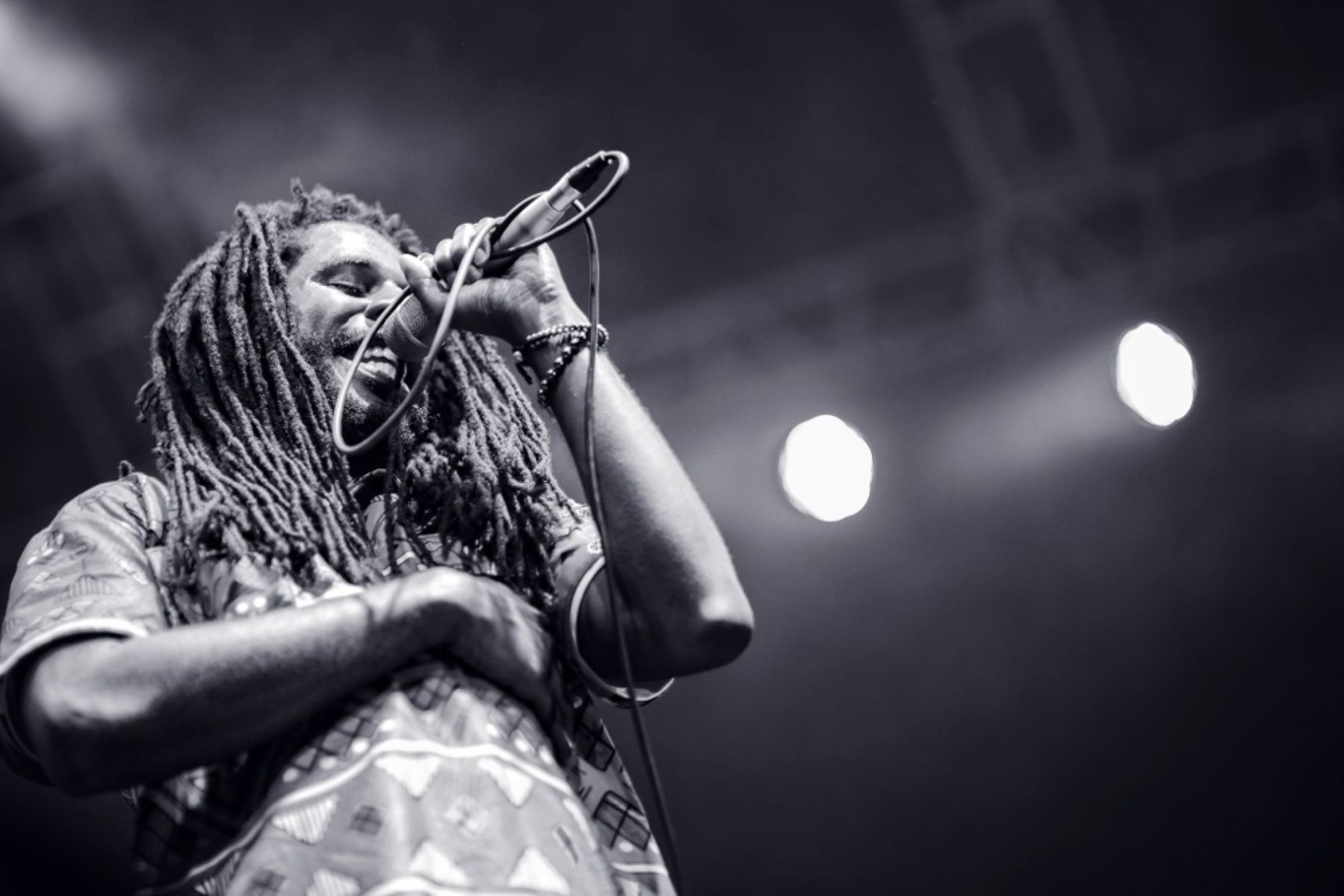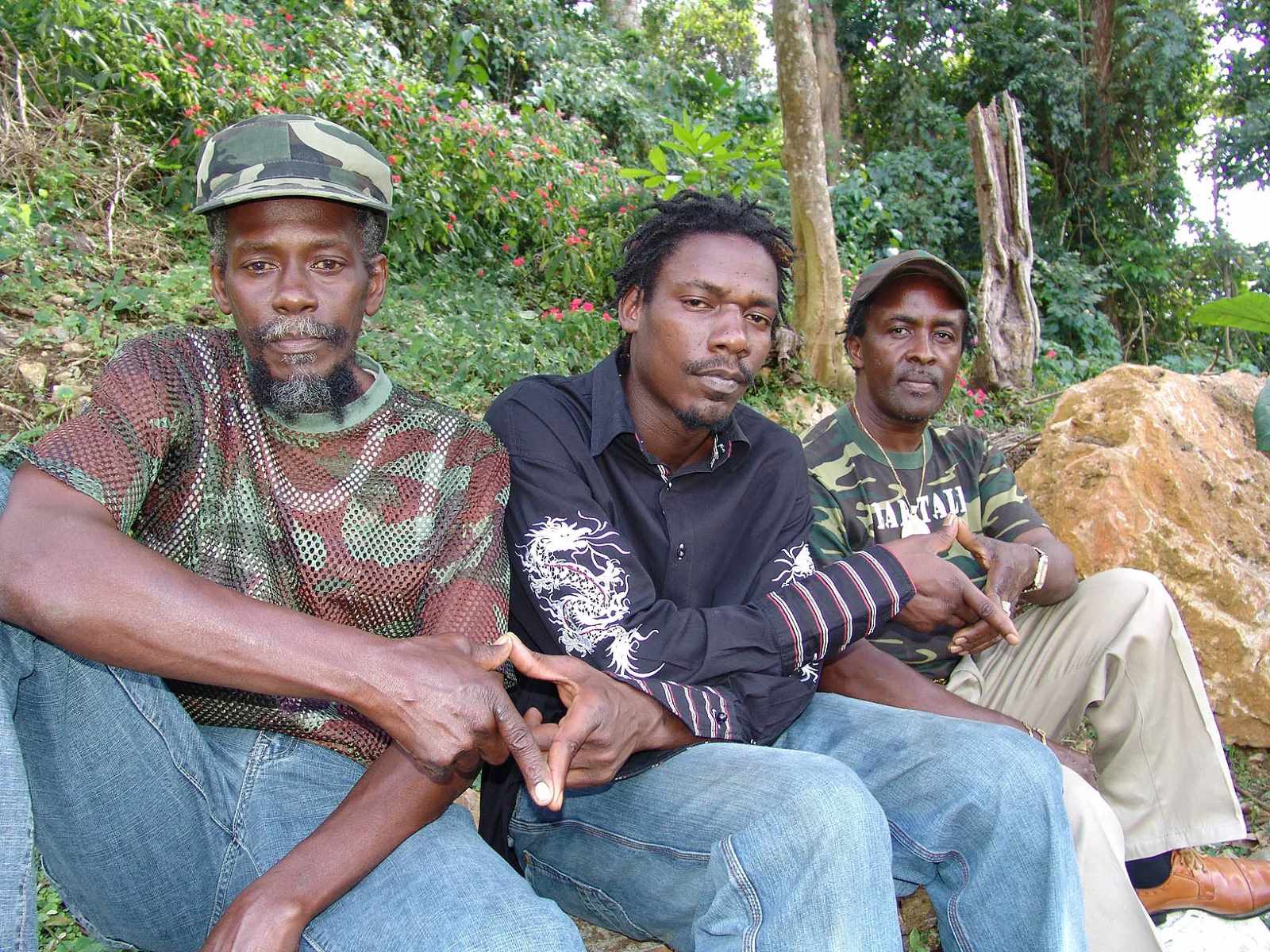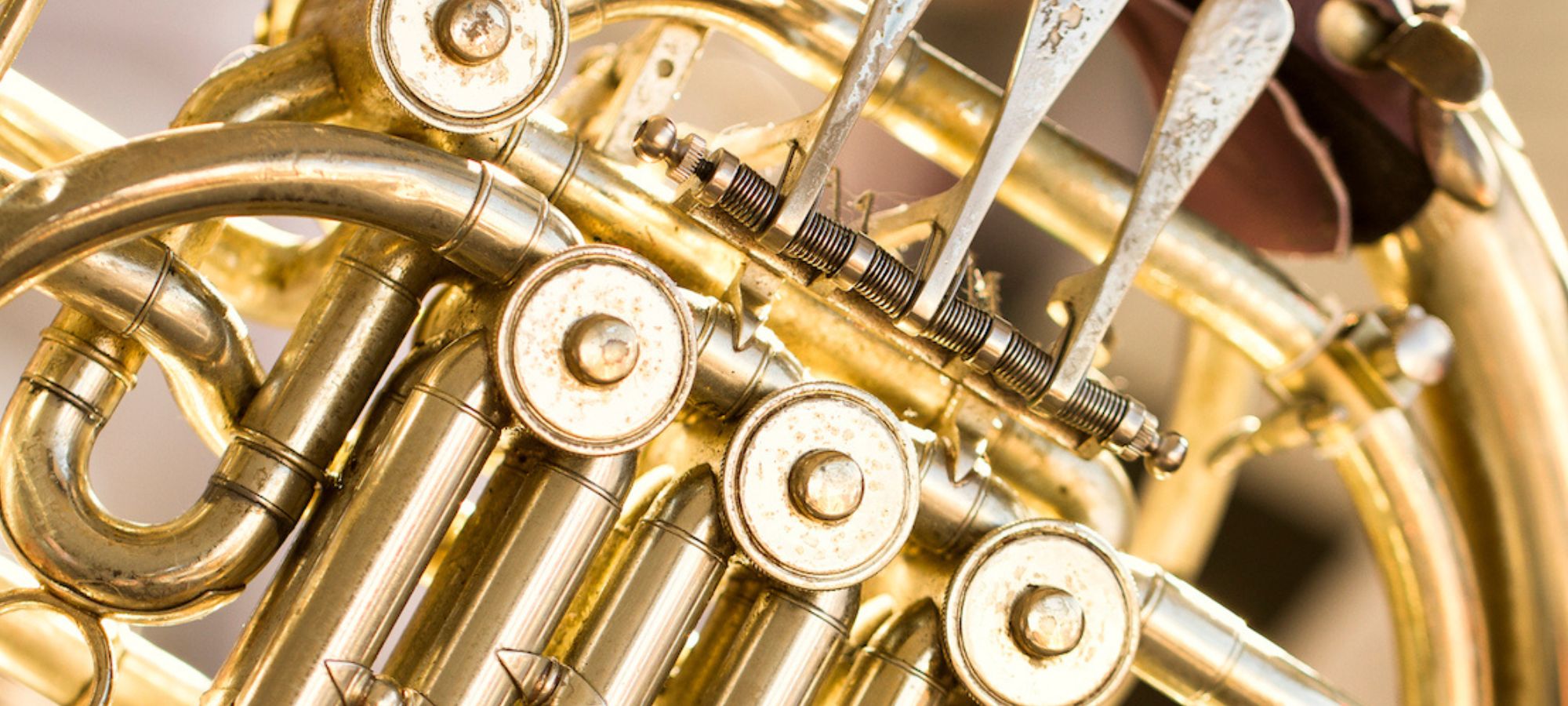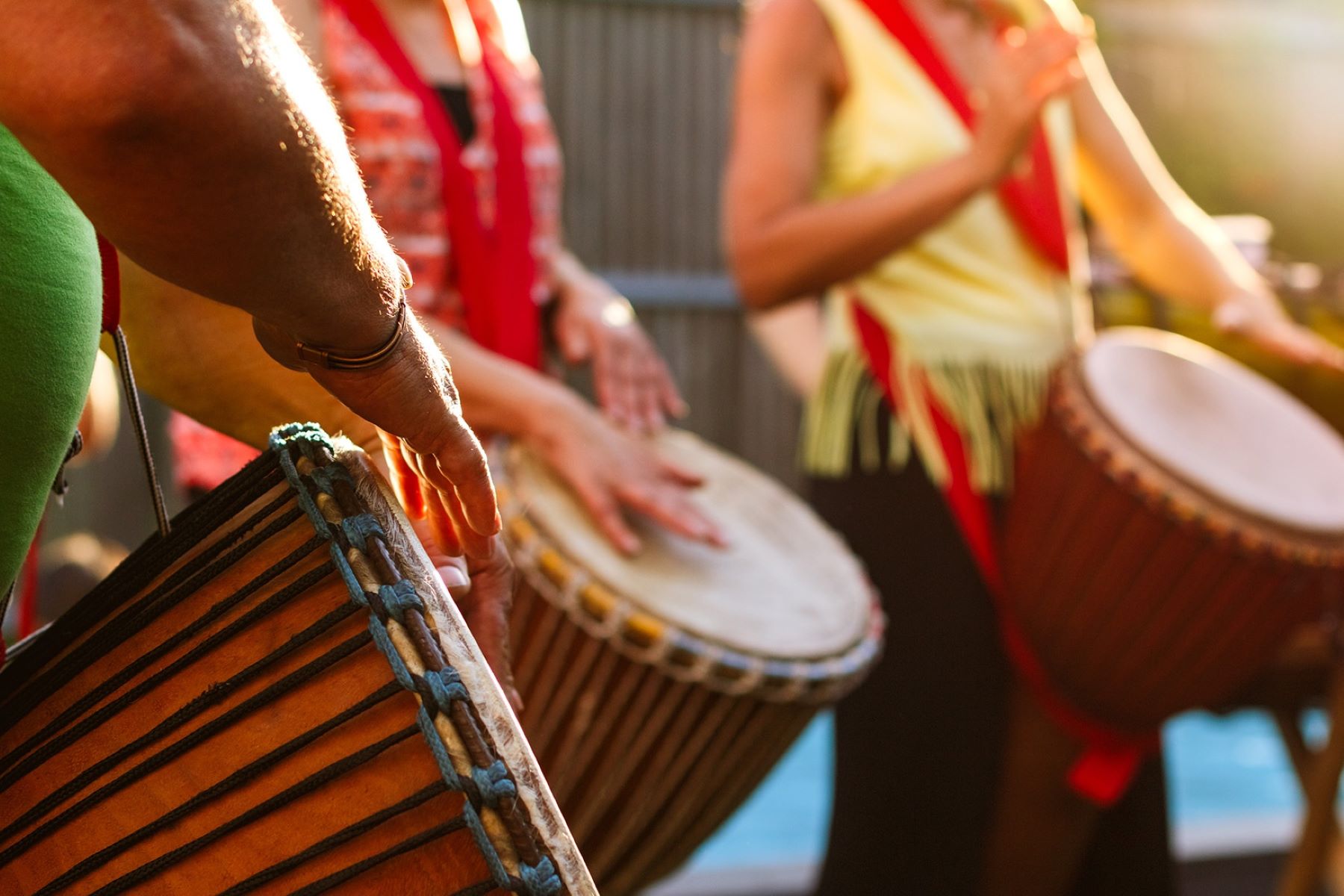

Reggae
What Instruments Are Used In Reggae
Modified: February 15, 2024
Learn about the instruments used in Reggae, including the iconic bass guitar, drums, keyboards, and brass instruments, that create the distinctive sound of this popular music genre.
(Many of the links in this article redirect to a specific reviewed product. Your purchase of these products through affiliate links helps to generate commission for AudioLover.com, at no extra cost. Learn more)
Table of Contents
Introduction
Reggae is a vibrant and influential music genre that originated in Jamaica in the late 1960s. Known for its upbeat rhythms, distinctive basslines, and socially conscious lyrics, reggae has captivated audiences around the world. One of the key elements that contribute to the unique sound of reggae is the variety of instruments used in its production.
In this article, we will explore the different instruments commonly found in reggae music. From the essential backbone of the rhythm section to the iconic horn section and other instruments that add depth and flavor to reggae compositions, we will delve into the rich musical tapestry that defines this genre.
It’s important to note that while some instruments are considered quintessential to reggae, the genre is known for its experimental and innovative nature, and musicians often incorporate a wide range of instruments to create their own distinct sound.
So, grab your headphones and get ready to dive into the melodic world of reggae as we uncover the instruments that make this genre so beloved.
The Rhythm Section
The foundation of reggae music lies in its rhythm section, driving the infectious grooves that make listeners want to move their feet. Consisting of drums, bass guitar, and rhythm guitar, the rhythm section provides the backbone for reggae compositions.
The Drum Kit: In reggae, the drums play a vital role in establishing the distinctive groove. The drummer uses a combination of techniques, including a strong emphasis on the bass drum to create a deep and steady beat. The snare drum is often played with a cross-stick technique, producing a crisp and tight sound. Additionally, reggae drummers incorporate syncopated hi-hat patterns to add complexity and energy to the rhythm.
The Bass Guitar: The bass guitar is a defining element of reggae music, responsible for the deep, melodic basslines that give the genre its infectious groove. The bassist typically plays on the offbeat, known as the “one-drop” rhythm, accentuating the syncopation and providing a solid foundation for the other instruments.
The Rhythm Guitar: The rhythm guitar in reggae provides the skanking chords that drive the music forward. Playing on the offbeat, the guitarist creates a percussive and rhythmic strumming pattern, often using muted or staccato techniques. This distinctive style adds texture and movement to reggae compositions.
The combination of these three instruments working together creates the signature rhythm of reggae music. The drum kit establishes the beat, the bass guitar adds depth and groove, and the rhythm guitar provides the rhythmic structure. Together, they create a pulsating and infectious foundation for reggae songs.
The Drum Kit
The drum kit is a fundamental component of the rhythm section in reggae music. It provides the driving force and rhythmic foundation that sets the groove for the entire composition. Reggae drummers employ specific techniques and patterns to create the distinctive sound that is synonymous with the genre.
The drum kit used in reggae typically consists of a bass drum, snare drum, hi-hat cymbals, tom-toms, and a ride or crash cymbal. Each element of the drum kit plays a crucial role in shaping the rhythm of the music.
Bass Drum: The bass drum, also known as the kick drum, is responsible for providing the steady and thumping low-end frequencies that drive the groove. In reggae, the bass drum is often played on the first and third beats of a measure, creating a “four on the floor” rhythm that keeps the pulse strong and steady.
Snare Drum: The snare drum in reggae is typically played with a cross-stick technique, where the drummer strikes the drumhead with the side of the stick instead of the tip. This produces a crisp and tight sound, enhancing the rhythmic clarity and adding a distinctive texture to the music. The snare drum is often played on the third beat, emphasizing the offbeat characteristic of reggae music.
Hi-Hat Cymbals: The hi-hat cymbals are operated by a foot pedal and consist of two cymbals that can be opened and closed to produce different sounds. In reggae, the hi-hat is used to create syncopated patterns, with the drummer accentuating the offbeats in between the bass drum and snare drum hits. This adds rhythmic complexity and energy to the music.
Tom-Toms: Tom-tom drums are used to add fills and flourishes to reggae compositions. Drummers incorporate tom-toms to create intricate rhythmic patterns, adding variation and excitement to the music. These drums are often played on the offbeat, further enhancing the syncopated nature of reggae rhythm.
Ride/Crash Cymbal: The ride or crash cymbal is used to add accents and punctuations to the music. Drummers employ the cymbal to highlight specific beats or sections of a song, providing a dynamic and expressive element to the rhythm.
Reggae drummers possess a keen sense of timing and groove, combining these different elements of the drum kit to create a rhythmic tapestry that is infectious and captivating. It is their skillful execution and attention to detail that contributes to the unique and unmistakable sound of reggae music.
The Bass Guitar
The bass guitar is a crucial component of the rhythm section in reggae music. Its deep and melodic basslines provide the foundation and groove that define the genre. With its distinct playing style and placement in the mix, the bass guitar adds richness and complexity to reggae compositions.
In reggae, the bass guitar often follows a rhythmic pattern known as the “one-drop” rhythm. The term “one-drop” refers to emphasizing the third beat of the measure, creating a syncopated offbeat feel. This rhythm gives reggae its characteristic bounce and infectious groove.
The bassist in reggae typically plays with a fingerstyle technique, using their fingers to pluck the strings instead of a pick. This technique allows for greater control and precision, enabling the bassist to produce the rich and warm tones that complement the overall sound of reggae.
One of the key elements of reggae basslines is the use of repetition and variation. The bassist often plays melodic patterns that repeat throughout the song, providing a solid and recognizable foundation. At the same time, they incorporate variations and fills to add interest and keep the groove fresh. This combination of repetition and variation gives the basslines in reggae their distinct allure.
The bass guitar is responsible for providing the low-end frequencies that give reggae its distinctive rumble. By playing on the offbeat and emphasizing the third beat, the bass guitar adds a rhythmic pulse that propels the music forward. It creates a synergy with the drums, locking in with the bass drum to create a tight and powerful rhythm section.
In addition to the rhythmic aspect, the bass guitar in reggae also contributes melodic elements. Bassists often add melodic fills and embellishments to their basslines, creating melodic patterns that interact with the other instruments. These melodic elements add depth and texture to the music, elevating the overall sonic experience.
The bass guitar in reggae is not just a supporting instrument but a vital player in shaping the overall sound. Its melodic and rhythmic contributions create the foundation, groove, and melodic structure that define reggae music.
The Rhythm Guitar
The rhythm guitar plays a crucial role in the rhythm section of reggae music. It provides the skanking chords that drive the music forward and adds a percussive and rhythmic dimension to reggae compositions. The rhythmic patterns created by the rhythm guitar contribute to the infectious groove that defines the genre.
In reggae, the rhythm guitar typically plays on the offbeat, emphasizing the second and fourth beats of the measure. This accentuation of the offbeat creates a syncopated feel that is a hallmark of reggae music. By strumming or picking the strings in a percussive manner, the rhythm guitarist adds a layer of rhythmic energy to the music.
One of the key techniques used in reggae rhythm guitar playing is muting or dampening the strings. This technique helps to create a staccato effect, where the chords are punctuated and sharp. By muting the strings with the palm of their hand or using a partial barre chord technique, the rhythm guitarist achieves a tight and percussive sound.
Another technique commonly employed in reggae rhythm guitar playing is the use of chop chords. This involves muting the chord immediately after it is played, creating a rhythmic choppy effect. The chop chords are often used to provide a rhythmic punctuation, accentuating the offbeats and enhancing the syncopated groove of reggae music.
The rhythm guitar in reggae also incorporates triad chords and inversions to add melodic elements to the composition. These chords create a melodic interplay with other instruments, enhancing the overall musicality of the song. By carefully choosing the chord voicings and inversions, the rhythm guitarist can add depth and complexity to the music.
The combination of the offbeat strumming, muting techniques, and incorporation of chop chords and inversions gives the rhythm guitar its characteristic sound in reggae. It serves as the rhythmic backbone that drives the music forward, providing a solid foundation for the other instruments to build upon.
Furthermore, the rhythm guitar is often responsible for filling out the musical space between vocal phrases or instrumental sections. During these moments, the guitarist may incorporate short melodic riffs or fills to maintain the continuity and interest of the music.
Overall, the rhythm guitar in reggae is more than just a background instrument. Its unique playing style and rhythmic techniques contribute significantly to the infectious groove and energy of reggae music, making it an essential component of the genre.
The Keyboard
The keyboard is a versatile instrument that plays a pivotal role in reggae music, adding melodic, harmonic, and atmospheric elements to the compositions. It contributes to the overall texture and sound of reggae, enhancing the musicality and creating a unique sonic experience.
The keyboard in reggae often takes on the responsibility of providing melodic lines and chords. With its ability to produce a wide range of sounds, from lush pads to percussive tones, the keyboard adds depth and richness to the music.
One of the essential roles of the keyboard in reggae is to simulate the sound of the classic Hammond organ. The rich and warm tones of the Hammond organ have become synonymous with reggae music. Keyboardists often use vintage organ sounds or digital emulations to recreate the signature sound of the Hammond organ in reggae compositions. The organ adds a soulful and vintage vibe, filling out the harmony and creating a captivating atmosphere.
In addition to the organ, keyboards in reggae also include piano, electric piano, and synthesizers. These instruments are utilized to provide melodic and harmonic layers, adding depth and complexity to the music. The keyboardist may play chords, arpeggios, or melodic lines to complement the rhythm section and interact with other instruments.
Moreover, keyboardists in reggae often employ techniques like skanking, where they play short and percussive chords on the offbeat, similar to the rhythm guitar. Skanking on the keyboard further reinforces the syncopated groove of reggae, adding a rhythmic and percussive element to the music.
Besides the melodic and rhythmic contributions, the keyboard also serves as a textural instrument in reggae. Keyboardists use various effects and modulation techniques to create atmospheric and ambient sounds. These textures add layers of depth and create a sense of space in the music.
Overall, the keyboard is a versatile instrument that enriches reggae music with its melodic, harmonic, and textural elements. Whether emulating the classic sound of the Hammond organ, providing intricate chords and melodies, or creating atmospheric textures, the keyboard plays a vital role in shaping the sonic landscape of reggae compositions.
The Horn Section
The horn section is a prominent feature in reggae music, adding a powerful and vibrant element to the compositions. Consisting of trumpets, saxophones, and trombones, the horns bring a rich and dynamic sound that enhances the overall musical experience.
The horn section in reggae serves multiple purposes. It adds melodic lines, creates harmonies, and provides brass accents that punctuate and elevate the music. The combination of these instruments creates a warm and resonant sound that is instantly recognizable.
The Trumpet: The trumpet is a key instrument in the horn section, known for its bright and piercing sound. In reggae music, the trumpet plays melodic lines, often adding catchy hooks and memorable melodies that give the songs a distinctive character. It also contributes harmonies and accentuates the rhythm with punctuated accents.
The Saxophone: The saxophone brings a soulful and expressive quality to reggae. It can play both melodic and harmonic parts, providing smooth and flowing lines that complement the vocals or add counterpoint to other instruments. The saxophone’s versatility allows it to create variations in tone and texture, from mellow and smooth to energetic and raspy.
The Trombone: The trombone adds depth and richness to the horn section in reggae music. Its deep, resonant tones add a powerful and earthy quality to the compositions. The trombone often plays harmonic parts, providing lush chordal textures and rhythmic accents. It also adds dynamic swells and slides, further enhancing the expressive nature of the music.
The horn section in reggae is known for its tight arrangements and harmonies. The horns work together to create lush and vibrant harmonies, enhancing the overall sound and creating a full-bodied musical experience. These harmonies often serve as a counterpoint to the vocals or interact with the other instruments, blending seamlessly to create a cohesive and impactful sound.
In live performances, the horn section takes center stage, commanding attention with their powerful sound and energetic performances. Their dynamic presence adds a visual element to the music, enhancing the overall excitement and engagement of the audience.
From catchy melodies to harmonies and accents, the horn section in reggae music brings a lively and energetic quality that elevates the compositions to new heights. Its bold and distinctive sound adds a layer of richness and excitement, making the music come alive and ensuring that reggae remains a genre that is impossible to ignore.
The Trumpet
The trumpet is a vital instrument in the horn section of reggae music, bringing a vibrant and powerful sound that adds a distinct flavor to the compositions. Known for its bright and piercing tones, the trumpet plays a crucial role in shaping the melody, harmony, and overall energy of reggae songs.
In reggae, the trumpet often takes on melodic duties, playing catchy hooks, memorable lines, and improvisations. These melodic phrases contribute to the overall character and identity of the songs, creating ear-catching and memorable melodies that stick with listeners long after the music ends.
Aside from its melodic contributions, the trumpet also plays a significant role in harmonies. It adds rich and lush harmonies that enhance the overall sound and create a full-bodied musical experience. The harmonies created by the trumpet blend seamlessly with other instruments and vocals, creating a cohesive and captivating sonic tapestry.
Moreover, the trumpet in reggae serves as an accent instrument, punctuating the rhythm with bold and percussive accents. These accents help to drive the groove and add an additional layer of rhythmic complexity. The trumpet’s staccato and percussive playing style cut through the mix, making it an integral part of the rhythmic backbone of reggae music.
Furthermore, the trumpet in reggae is known for its ability to create dynamic swells and expressive slides. These techniques add depth and emotion to the music, capturing the essence of reggae’s soulful and passionate nature. The trumpet’s versatility allows it to shift seamlessly between energetic and joyous passages to introspective and emotive moments.
In live performances, the trumpet takes center stage, mesmerizing audiences with its dynamic and commanding presence. Its piercing sound and energetic performances contribute to the visual spectacle and excitement of the show, creating an unforgettable experience for listeners.
Overall, the trumpet in reggae music brings a lively and powerful element that cannot be overlooked. Whether through melodic hooks, harmonies, rhythmic accents, or expressive techniques, the trumpet adds a distinct and irreplaceable sound to reggae compositions. Its bright tone and versatility make it a key component in shaping the vibrant and captivating nature of reggae music.
The Saxophone
The saxophone is a versatile and soulful instrument that adds a unique touch to the horn section of reggae music. With its smooth and expressive sound, the saxophone brings a captivating quality to reggae compositions, contributing to the overall richness and depth of the music.
In reggae, the saxophone serves as both a melodic and harmonic instrument. It lends its melodious voice to the music, playing catchy and memorable lines that enhance the overall character of the songs. With its ability to bend notes and express a wide range of emotions, the saxophone creates enchanting melodies that resonate with listeners.
Additionally, the saxophone contributes harmonies to reggae music. It enriches the overall sound by weaving harmonies with other instruments or vocal harmonies, adding depth and complexity to the composition. The harmonies created by the saxophone complement the melodic and rhythmic elements, creating a cohesive and harmonically rich musical experience.
One of the defining characteristics of the saxophone in reggae is its ability to bring a soulful and expressive quality to the music. Whether playing smooth and mellow lines or energetic and raspy tones, the saxophone adds a dynamic range of emotions to reggae compositions. It can evoke a sense of longing, joy, or contemplation, amplifying the emotional impact of the music.
Another aspect of the saxophone in reggae is its versatility. Saxophonists incorporate various playing techniques, such as vibrato, glissandos, and embellishments, to infuse their performances with personal expression and creativity. These techniques add depth, nuance, and flair to the saxophone’s contributions, making each note come alive with personality.
Moreover, the saxophone often takes on the role of providing counterpoint and interplay with other instruments. It creates melodic lines and improvisations that interact and respond to the vocals or other instrumental solos. This interplay adds layers of complexity and interaction within the music, keeping the listener engaged and inviting them into the journey of the song.
Whether soaring in melodic lines or adding sumptuous harmonies, the saxophone in reggae music brings a unique blend of soul, emotion, and versatility. It enriches the compositions with its expressive qualities, creating a captivating sonic experience and serving as a testament to the power of the saxophone in reggae music.
The Trombone
The trombone is a powerful and versatile brass instrument that plays a significant role in the horn section of reggae music. With its deep, resonant tones, the trombone adds richness, depth, and earthiness to the compositions, enhancing the overall musical experience.
In reggae, the trombone contributes both melodic and harmonic elements to the music. Its smooth and expressive sound lends itself to playing melodic lines that add a unique and soulful quality to reggae compositions. The trombone’s ability to glide between notes and produce rich and warm tones creates a captivating melodic presence in the music.
While providing melodic lines, the trombone also plays a crucial role in harmonies. It adds lush and full harmonizations to reggae music, creating sonorous and vibrant chordal textures. These harmonies blend seamlessly with other instruments and vocal harmonies, further enriching the overall sound and creating a full-bodied sonic experience.
One of the distinctive features of the trombone in reggae is its capacity to create dynamic swells and expressive glissandos. These techniques add depth and emotion to the music, infusing it with a touch of soul and passion. The trombone’s ability to slide between notes with smoothness and precision allows it to express a wide range of emotions, from moments of introspection to exuberant bursts of energy.
Moreover, the trombone in reggae serves as a rhythmic instrument, adding accentuations and punctuations to the rhythm. By incorporating staccato playing techniques and rhythmic accents, the trombone enhances the syncopated nature of reggae music. Its bold and percussive sound cuts through the mix, contributing to the overall rhythmic drive and energy of the compositions.
Additionally, the trombone adds fills and flourishes, creating variations and ornamentations within the musical phrases. These embellishments provide moments of musical flair and playfulness, further showcasing the trombone’s versatility and the creativity of the player.
In live performances, the trombone stands out with its commanding presence and expressive capabilities. Its deep and resonant sound captures the attention and adds visual interest to the performance, captivating the audience with its engaging and soul-stirring performances.
From melodic lines to harmonies, dynamic swells to rhythmic accents, the trombone in reggae music brings a distinctive and powerful voice that contributes to the genre’s unique sound. Its earthy and expressive qualities make it an essential component of the horn section, adding richness, depth, and remarkable musicality to reggae compositions.
Other Instruments in Reggae
While the rhythm section and horn section take center stage in reggae music, there are other instruments that contribute to the vibrant and diverse soundscape of the genre. These instruments add texture, color, and unique flavors to reggae compositions, further distinguishing the music and captivating listeners.
Percussion Instruments: Percussion instruments play a vital role in reggae, adding rhythmic complexity and accentuating the groove. Instruments such as bongos, congas, shakers, and tambourines provide additional layers of percussive textures, adding depth and creating a strong rhythmic pulse. These instruments often introduce syncopated patterns and playful variations, enhancing the infectious and energetic nature of reggae music.
The Melodica: The melodica is a distinctive instrument found in reggae. It resembles a small keyboard and is played by blowing air into it while pressing the keys to produce sound. The melodica brings a unique timbre to reggae compositions, providing a subtle and ethereal quality. Its delicate and airy notes can be used for melodic accompaniment, counterpoint to other instruments, or as a solo instrument, adding a touch of whimsy to the music.
The Organ: In addition to the keyboard mentioned earlier, the organ holds a significant place in reggae music. Whether using a vintage Hammond organ or a digital emulation, the deep, lush, and soulful tones of the organ create a rich and captivating atmosphere. The organ often plays rhythmic chords and melodic lines, adding depth, warmth, and a sense of nostalgia to reggae compositions.
Other instruments that can make appearances in reggae include guitars, both acoustic and electric. Acoustic guitars add a mellow and percussive texture, providing a natural and earthy element to the music. Electric guitars, on the other hand, can offer scintillating solos, adding excitement and energy to the compositions. These guitars may employ techniques such as palm muting, staccato chords, and rhythmic strumming to contribute to the reggae groove.
Occasionally, string instruments like violins or cellos may be added to reggae compositions to provide additional melodic and harmonic elements. Their rich and resonant tones create a lush and orchestral quality, expanding the sonic palette of reggae and adding a touch of elegance to the music.
It is worth noting that while these instruments are commonly associated with reggae, the genre also embraces experimentation and innovation. Musicians in reggae frequently incorporate a wide range of instruments and sounds, allowing their creativity to shape the music in unique and exciting ways.
Through the combination of traditional and non-traditional instruments, reggae music becomes a vibrant and ever-evolving tapestry, inviting listeners into a world of rich and diverse sonic experiences.
Percussion Instruments
Percussion instruments play a crucial role in the rhythm and overall sound of reggae music. They contribute to the infectious groove and provide rhythmic complexity that drives the music forward. From bongos and congas to shakers and tambourines, percussion instruments add texture, energy, and a distinct rhythmic pulse to reggae compositions.
Bongos: Bongos are traditional hand drums consisting of a pair of small open-ended drums connected together. In reggae, bongos are often played with the fingers and palms, producing vibrant and resonant tones. They add a lively and percussive element to the music, layering intricate rhythms on top of the groove and adding a touch of vibrancy to the overall sound.
Congas: Congas are tall, narrow drums that are played with the hands and fingers. In reggae music, they provide deep and resonant tones, creating a strong rhythmic foundation. The congas add a rich and earthy texture to the music, enhancing the low-end frequencies and bringing a dynamic energy to the rhythmic arrangement.
Shakers: Shakers come in various shapes and sizes and are often constructed with hollowed-out gourds or containers filled with seeds or small objects. They produce gentle rattling sounds, adding a subtle and shimmering texture to the music. Shakers in reggae help maintain the rhythm by accentuating the offbeats or adding percussive fills, creating an infectious and vibrant atmosphere.
Tambourines: Tambourines consist of a circular frame with small metal jingles attached. They are played by shaking or striking the instrument, creating a bright and jingling sound. In reggae, tambourines are often used to emphasize the backbeat, reinforcing the offbeat groove and adding a distinctive rhythmic accent that complements the other instruments.
Collectively, these percussion instruments bring a diverse range of rhythmic textures to reggae music. They provide layers of intricacy, energize the groove, and enhance the overall listening experience. Percussionists in reggae music possess a deep understanding of timing, dynamics, and coordination to create syncopated patterns and playful variations that carry the music forward.
It’s important to note that while these percussion instruments are commonly found in reggae, the genre is known for its experimentation and incorporation of various other percussive elements. This can include hand drums, cymbals, cowbells, and more. The creative use of percussion instruments in reggae allows for an ever-evolving and eclectic sound that maintains the genre’s vibrant and infectious nature.
The Melodica
The melodica is a unique and charming instrument that has become synonymous with reggae music. It combines the keyboard layout of a piano with the blowing technique of a wind instrument, creating a distinct sound that adds a whimsical and ethereal quality to reggae compositions.
The melodica consists of a small keyboard that is played by blowing air into a mouthpiece while pressing the keys to produce sound. The player can control the volume and intensity of the notes by adjusting their breath. This versatility allows for expressive performances that can range from delicate and airy to bold and rhythmic.
In reggae, the melodica often serves as a melodic accompaniment, providing counterpoint to other instruments or vocals. It adds a layer of texture and depth to the music, creating a sense of playfulness and intrigue. The melodica’s unique timbre contributes to the overall distinctive sound of reggae, making it instantly recognizable.
One of the fascinating aspects of the melodica is its ability to easily shift between a lead instrument and a supporting role. It can take on captivating melodic solos, capturing the listener’s attention with its lyrical and expressive qualities. Alternatively, it can play subtle melodic lines or atmospheric fills that add color and ambiance to the composition.
Another characteristic of the melodica in reggae is its capacity to evoke a sense of nostalgia. Its whimsical and gentle sound can transport listeners to the golden era of reggae, invoking a feeling of warmth and familiarity. The melodica’s association with vintage reggae recordings has made it an iconic instrument in the genre.
Furthermore, the melodica’s accessibility and portability have made it a popular choice for musicians and enthusiasts alike. Its compact size allows for easy transportation, making it a versatile instrument that can be played in various settings, from intimate acoustic performances to large-scale reggae ensembles.
While the melodica is commonly associated with reggae, its versatility extends beyond the genre. It has been embraced by musicians of different backgrounds, making appearances in jazz, folk, and world music. This flexibility reflects the instrument’s adaptability and universal appeal.
Whether as a featured solo instrument, a melodic accompaniment, or a nostalgic touch, the melodica adds a unique and enchanting element to reggae music. With its whimsy and ethereal sound, this humble instrument continues to shape the distinct sonic landscape of reggae, capturing the hearts of listeners worldwide.
The Organ
The organ is a prominent and iconic instrument in reggae music, known for its rich and soulful sound. Whether in the form of a vintage Hammond organ or a digital emulation, the organ adds a distinctive texture, depth, and atmosphere to reggae compositions, creating a captivating musical experience.
In reggae, the organ often takes on a rhythmic role, playing chords and rhythmic patterns that establish the groove and provide a solid foundation for the music. The deep and lush tones of the organ resonate throughout the compositions, enhancing the low-end frequencies and giving reggae its signature rumble.
The organ’s rhythmic chords in reggae are often played on the offbeat, emphasizing the syncopated nature of the music. By accentuating the offbeat, the organ helps to drive the groove and create a pulsating energy that captivates listeners. Its rhythmic patterns add a sense of urgency and anticipation, urging the music forward.
What sets the organ apart is its ability to create a warm and nostalgic atmosphere in reggae music. Its layered and harmonically rich tones bring a sense of nostalgia and a vintage vibe, harkening back to the golden era of reggae. The organ’s soulful and timeless sound evokes a feeling of familiarity and transports listeners to a different time and place.
In addition to its rhythmic and atmospheric contributions, the organ in reggae also plays melodic lines. It adds melodic fills, solos, and embellishments that interact and intertwine with other instruments. These melodic elements provide variation, texture, and interest to the music, further enhancing the overall musicality of the compositions.
The organ’s versatility allows it to fit seamlessly into various styles within reggae, from roots reggae to ska and dub. In roots reggae, the organ contributes to the deep spiritual quality of the music, adding a sense of solemnity and reverence. In ska, the organ adds a lively and energetic dimension, creating a sense of joy and exuberance. In dub, the organ’s haunting chords and atmospheric effects enhance the otherworldly and psychedelic nature of the music.
While the organ has traditionally been associated with religious and gospel music, its incorporation into reggae showcases its adaptability and versatility. It has become a defining instrument in reggae, shaping the genre’s sonic landscape and leaving an indelible mark on its sound.
From rhythmic chords to nostalgic harmonies, and melodic lines to atmospheric textures, the organ in reggae music adds a depth and richness that is unparalleled. Its soulful and resonant tones create a distinct sonic identity, making it an essential element in capturing the spirit and essence of reggae.
Conclusion
Reggae music is a genre that captivates listeners with its infectious rhythms, powerful lyrics, and vibrant sound. The instruments used in reggae play a vital role in shaping the unique characteristics and dynamics of the genre. From the rhythmic foundation provided by the drum kit, bass guitar, and rhythm guitar to the melodic and harmonious contributions of the keyboard, trumpet, saxophone, and trombone, each instrument adds its own flavor, texture, and energy to reggae compositions.
The drum kit establishes the heartbeat of reggae, driving the groove and setting the pace. The bass guitar creates the deep and melodic basslines that anchor the music, while the rhythm guitar adds percussive and rhythmic strumming patterns, driving the music forward. The keyboard brings melodic, harmonic, and atmospheric elements, whether through vintage organ sounds, piano, or synthesizers, enriching the overall sound and creating a captivating musical experience.
The horn section, with the trumpet, saxophone, and trombone, adds powerful and soulful melodies, harmonies, and accents. Their collective sound elevates the music, creating a vibrant and dynamic sonic landscape that captures the essence of reggae. These instruments bring a range of emotions and energies, from the bright and piercing sound of the trumpet to the smooth and expressive nature of the saxophone, and the deep and resonant qualities of the trombone.
Reggae music also incorporates other instruments, such as percussion instruments that add intricate rhythms and textures, the melodica with its whimsical and ethereal sound, and the organ that provides depth, nostalgia, and atmosphere. These instruments contribute to the diverse and captivating nature of reggae, showcasing the genre’s experimental and innovative spirit.
In conclusion, the instruments used in reggae are the building blocks of its distinct sound. They come together to create a vibrant tapestry of rhythms, melodies, harmonies, and textures that define the genre. Whether you’re grooving to the infectious beats of the drums, feeling the depth of the basslines, or getting lost in the soulful melodies of the horns, reggae music has a way of leaving an indelible mark on your soul. So, next time you listen to reggae, pay attention to the instruments weaving their magic and experience the true power and beauty of this beloved genre.

